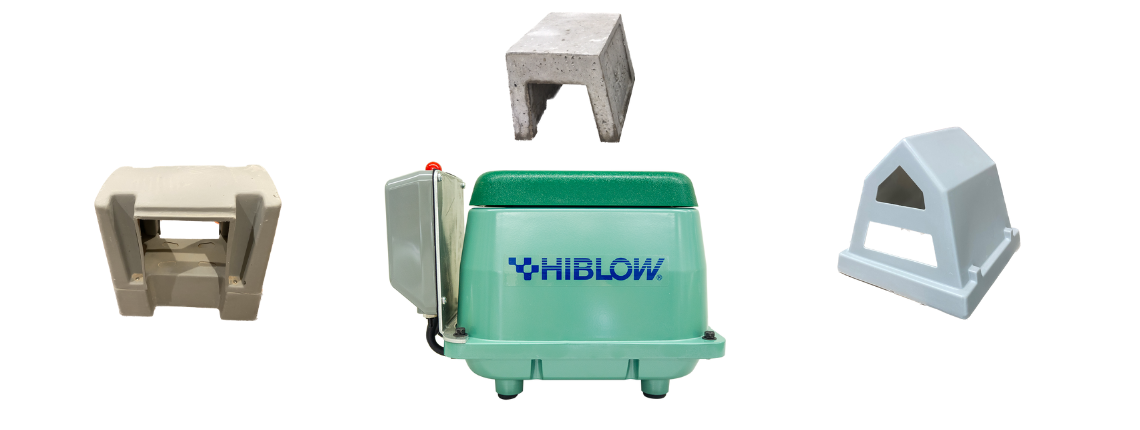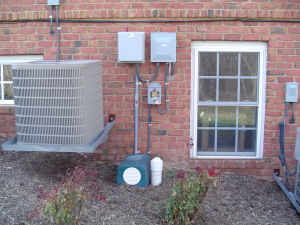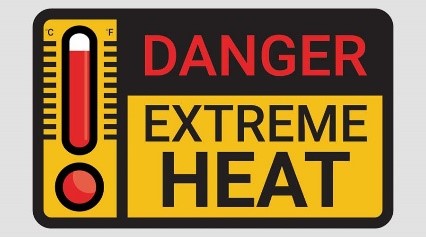April 25, 2023
Should My Septic Air Pump Be Covered?
Why air circulation and shade are critical to the life of your air pump.

History of Enclosures
For the past 20+ years, linear diaphragm air pumps have been the heart of most residential aerobic septic systems – also referred to as aerobic treatment units (ATU’s). However, that was not always the case. For years, rotary vane compressors were the most common and the technology required an enclosure to keep the pump protected from the elements. As a result, enclosures (seen below) were installed and became the standard.

Linear Diaphragm Technology – Outdoor UL
HIBLOW aerators and other linear diaphragm pumps in the industry are rated outdoor UL, meaning they can stand alone without an enclosure, regardless of the weather. A HIBLOW aerator has an aluminum housing that in essence is the enclosure. However, much of the industry still uses the same enclosures designed for the rotary vane with the belief that it’s required. While some enclosures can be beneficial, others can be detrimental to the life of the aerator.

Heat is the Enemy
HIBLOW’s diaphragms are made from EPDM rubber. The hotter the environment, the faster the diaphragms will wear and rupture. Other rubber materials such as the base and filter gaskets will wear quicker in the heat as well. You can’t control the temperature at your location, but you can put the pump in the best position to be successful. Keeping the aerator out of direct sunlight and allowing sufficient air circulation is the best way to extend the life of your pump.
Heat Test – Enclosures and Stand Alone
HIBLOW USA did a heat test, measuring the temperature of 3 different enclosure types and a HIBLOW air pump in the shade and in direct sunlight.
Testing Conditions:
- Temperature was measured at the top and bottom of the enclosure every 30 minutes between 10:30 AM and 2:30PM
- The temperature at 10:30 was 83F (real feel: 94F) and 86F (real feel: 97F) at 2:30.
- Location: Saline, MI.

Results at 2:30 (warmest time of the day)
| Type | Temperature at the top | Temperature at the Bottom | Average Temperature | |
| A | No enclosure in the shade | 116.3 °F | 129.9 °F | 123.1 °F |
| B | Enclosure with 2 open ends | 122.9 °F | 127.7 °F | 125.3 °F |
| C | No enclosure directly in the sun | 123.1 °F | 129.2 °F | 126.2 °F |
| D | Fake rock without vents | 132.2 °F | 136.0 °F | 134.1 °F |
| E | Riser top without vents | 136.8 °F | 149.5 °F | 143.2 °F |
Temperature Rankings: Coolest to Hottest
#1 – A: No enclosure in the shade. This comes as no surprise because the pump is getting the best of both worlds – it’s out of the sun and has 100% open air flow. Often, people put the pump on the north side of the house, under a tree, in a shed, in a garage, under a deck, or in a crawlspace, etc.
#2 – B. Enclosure with 2 open ends. Many ATU companies have gone to a similar design with two open ends. It provides good air flow while keeping the aerator in the shade. We think this is a quality set-up.
#3 – C. No enclosure directly in the sun. The fact that this option measured slightly higher than the first two proves that air flow is likely the most important factor when trying to keep the pump cool.
#4 – D. Fake rock without vents. We understand that folks like the look of the fake rock, but it comes with a price. Your diaphragms will likely rupture much faster than they would with proper ventilation.
#5 – Riser top without vents. Unfortunately, HIBLOW aerators are often installed under riser tops which are in the ground above the septic tank. In addition to the risk of water flooding the pump and damage from toxic sewer gases, the aerator “bakes” inside. As seen above, the riser measures 20 °F hotter than the pump by itself in the shade, in Michigan. In hotter states such as Texas and Louisiana, the temperature difference is amplified.
The Bottom Line:
If you want to extend the life of your aerator and save some money, find a way to maximize air circulation and keep the pump shaded.
If you have any questions regarding enclosures or your HIBLOW air pump, please give us a call. We would be happy to make some suggestions on how to improve your set-up.
Author: Mike Miner